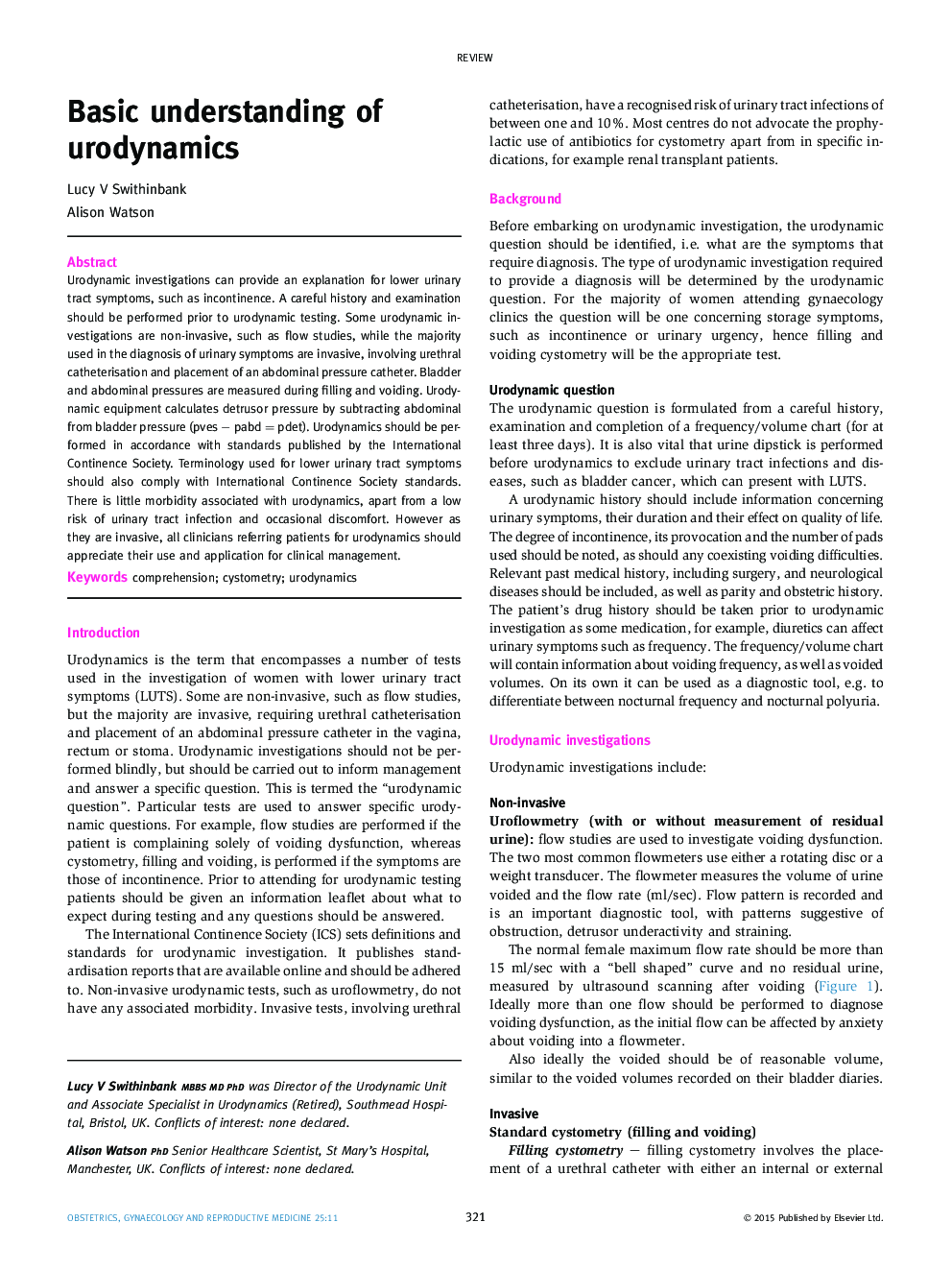| Article ID | Journal | Published Year | Pages | File Type |
|---|---|---|---|---|
| 3966610 | Obstetrics, Gynaecology & Reproductive Medicine | 2015 | 6 Pages |
Urodynamic investigations can provide an explanation for lower urinary tract symptoms, such as incontinence. A careful history and examination should be performed prior to urodynamic testing. Some urodynamic investigations are non-invasive, such as flow studies, while the majority used in the diagnosis of urinary symptoms are invasive, involving urethral catheterisation and placement of an abdominal pressure catheter. Bladder and abdominal pressures are measured during filling and voiding. Urodynamic equipment calculates detrusor pressure by subtracting abdominal from bladder pressure (pves − pabd = pdet). Urodynamics should be performed in accordance with standards published by the International Continence Society. Terminology used for lower urinary tract symptoms should also comply with International Continence Society standards. There is little morbidity associated with urodynamics, apart from a low risk of urinary tract infection and occasional discomfort. However as they are invasive, all clinicians referring patients for urodynamics should appreciate their use and application for clinical management.
